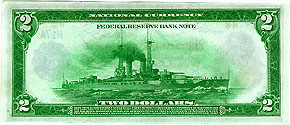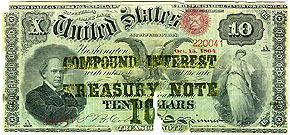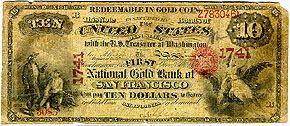| Robert F. Mulligan
WESTERN CAROLINA UNIVERSITY COLLEGE OF BUSINESS Department of Economics, Finance, & International Business |
 |
MBA 505 ECONOMICS AND PUBLIC POLICY
Chapter 26 CENTRAL BANKING AND MONETARY POLICY |
 |
| I. THE FEDERAL RESERVE SYSTEM
B. The Fed was created by Congress with the Federal Reserve Act of 1913. C. There are three main players in the Fed: 2. There is a Federal Reserve Bank for each of the 12 federal reserve districts. Each bank is owned by the member banks in the district, with shares based on the size of each member bank. Each of the federal reserve banks has a nine member board of directors and a president. The Fifth Federal Reserve District is served by the Federal Reserve Bank of Richmond, with branches in Charlotte and Baltimore. The district consists of North Carolina, South Carolina, Virginia, West Virginia, Maryland, Delaware, and the District of Columbia. 3. The Federal Open Market Committee (FOMC) is the major
policy making group in the Federal Reserve System. It consists of the Board
of Governors, the president of the Federal Reserve Bank of New York, and,
on a rotating basis, four of the eleven presidents of the other regional
Feds. The New York Fed is always represented because it carries out open
market operations - sales and purchases of U.S. Treasury bills,
bonds, and notes.
2. The Fed sets the required reserve ratio (or reserve requirement), the minimum percentages of deposits that banks must hold as reserves. The Fed does not change these ratios very often. Raising the required reserve ratio makes the banking system safer but less profitable. 3. The discount rate or rediscount rate is the
interest rate the Fed charges commercial banks when they borrow reserves
from the Fed. Increasing (decreasing) the discount rate makes it more costly
to borrow reserves and thereby reduces (increases) the money supply.
G. The money multiplier is the amount by which a change in the monetary base is multiplied to calculated the final change in the money supply. 2. A currency drain occurs when people hold currency rather than depositing it in banks. A currency drain reduces the amount of banks' reserves, thereby reducing the amount banks can loan and thus reducing the money multiplier. 3. The money multiplier was 2.9 in 1991. Increases in the ratio of banks'
reserves to bank deposits and the ratio of the public's currency holdings
to bank deposits reduce the money multiplier.
|
 |
| II. INTEREST RATE DETERMINATION
B. There is an inverse relationship between the price of a bond and the interest rate: as the interest rate rises (falls), the price of the bond decreases (increases). C. Equilibrium in the money market determines the equilibrium interest rate, r*. 2. Equilibrium in the goods market is a flow equilibrium, i.e., a situation where the quantity of goods or services supplied over some period of time is willingly demanded. 3. If the interest rate initially exceeds the equilibrium interest rate
r*, people demand less money than exists. Thus, they try to get rid of
their "excess" money by buying financial assets (e.g., bonds.) This drives
down the interest paid on the assets, thereby restoring the interest rate
to its equilibrium level r*.
2. In 1988 the Fed (under Alan Greenspan) again slowed the growth rate
of the money supply and interest rates again rose. Then in 1991 the Fed
increased the growth rate of the money supply and interest rates fell.
|
 |